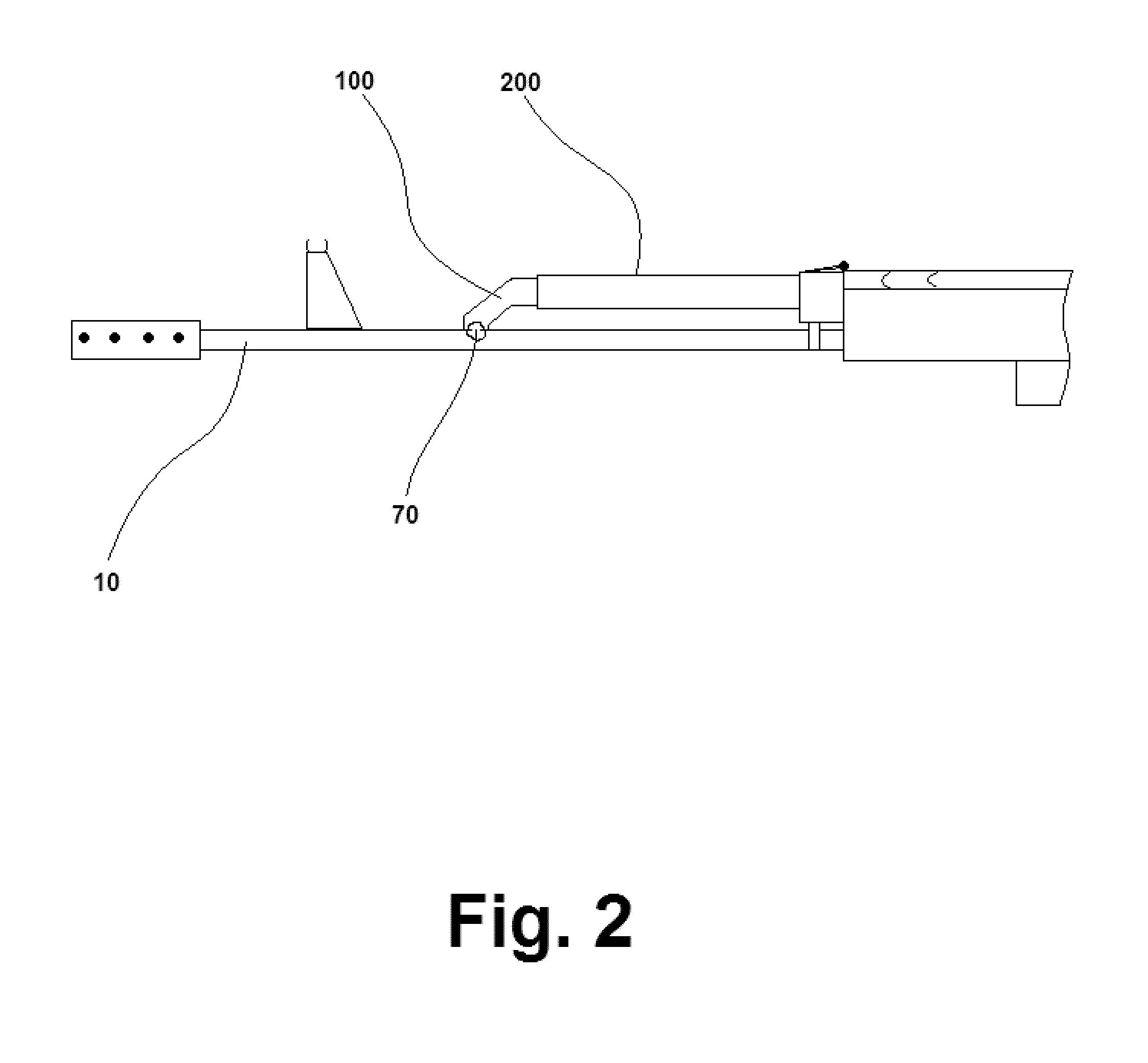Charging mechanism for gas powered firearms
a charging mechanism and gas-powered firearm technology, applied in the field of firearms, can solve problems such as the closing of the breech, achieve the effects of reducing the movement of the barrel and the loss of sight picture, facilitating and accelerating the grasping of the same, and facilitating the breech
- Summary
- Abstract
- Description
- Claims
- Application Information
AI Technical Summary
Benefits of technology
Problems solved by technology
Method used
Image
Examples
Embodiment Construction
[0041]An aspect of the present invention discloses an improved charging mechanism for a gas powered firearm 1. The present invention is intended to modify a firearm 1 having at least the following components: a barrel 10, a trigger 90, a firing chamber 30, a bolt assembly 40, a recoil spring mechanism 50, an operating rod 300, an ammunition magazine 60, a port 70 formed into the barrel 10, a gas block 100, a gas tube 200, and a charging handle 400. See FIGS. 1 and 2. The firearm 1 may also comprise a pistol grip 20 and a safety 80.
[0042]In operation, the bolt assembly 40 of the firearm 1 is suitably adapted to move forward and rearward, with its rearward movement causing a round of ammunition to be moved into the firing chamber 30 and its forward movement aligning the firing mechanism of the firearm 1 to permit firing of the round of ammunition. The movement of a round of ammunition into the firing chamber 30 and readying it for firing is known as charging the firearm 1. The operati...
PUM
 Login to View More
Login to View More Abstract
Description
Claims
Application Information
 Login to View More
Login to View More - R&D
- Intellectual Property
- Life Sciences
- Materials
- Tech Scout
- Unparalleled Data Quality
- Higher Quality Content
- 60% Fewer Hallucinations
Browse by: Latest US Patents, China's latest patents, Technical Efficacy Thesaurus, Application Domain, Technology Topic, Popular Technical Reports.
© 2025 PatSnap. All rights reserved.Legal|Privacy policy|Modern Slavery Act Transparency Statement|Sitemap|About US| Contact US: help@patsnap.com



